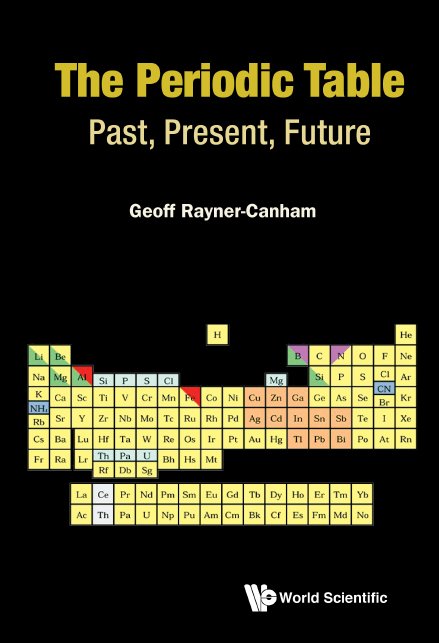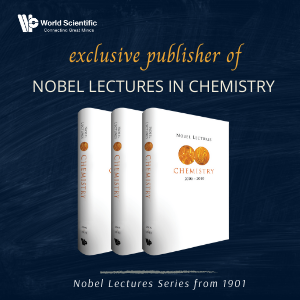System Upgrade on Tue, Oct 25th, 2022 at 2am (EDT)
Existing users will be able to log into the site and access content. However, E-commerce and registration of new users may not be available for up to 12 hours.For online purchase, please visit us again. Contact us at [email protected] for any enquiries.
"This is an an absolutely wonderful book that is full of gems about the elements and the periodic table … All in all, the book is highly recommended to philosophers of chemistry. As philosophers we have a natural tendency to concentrate on generalities and not to get too involved in the specifics and the details. Above all else, this new book reminds us that such an approach needs to be tempered by a detailed knowledge of the exceptions and features that go against the simplified generalities which we so cherish." [Read Full Review]
Foundations of Chemistry
"Many questions are dealt with in a clearly written way in this stimulating and innovative book. The reader will quickly become interested in the subject and will be taken on tour through this Periodic Table in a very readable way, both for students and teachers … The number of illustrations is good, and clear. This book is indeed unique and quite thought-provoking … This book is highly recommended for students, teachers, researchers and not only chemists! Geologists, biochemist and also physicists will find it very interesting to read." [Read Full Review]
That fossilized chart on every classroom wall — isn't that The Periodic Table? Isn't that what Mendeléev devised about a century ago? No and No. There are many ways of organizing the chemical elements, some of which are thought-provoking, and which reveal philosophical challenges. Where does hydrogen 'belong'? Can an element occupy more than one location on the chart? Which are the Group 3 elements? Is aluminum in the wrong place? Why is silver(I) like thallium(I)? Why is vanadium like molybdenum? Why does gold form an auride ion like a halide ion? Does an atom 'know' if it is a non-metal or metal? Which elements are the 'metalloids'? Which are the triels? So many questions! In this stimulating and innovative book, the Reader will be taken on a voyage from the past to the present to the future of the Periodic Table. This book is unique. This book is readable. This book is thought-provoking. It is a multi-dimensional examination of patterns and trends among the chemical elements. Every reader will discover something about the chemical elements which will provoke thought and a new appreciation as to how the elements relate together.
Sample Chapter(s)
Introduction
Chapter 0: The Periodic Table Exploration Begins!
Contents:
- About the Author
- Introduction
- The Periodic Table Exploration Begins!
- Isotopes and Nuclear Patterns
- Selected Trends in Atomic Properties
- First Period Problems
- The Group 3 Problem
- Categorizations of the Elements
- Isoelectronicity
- Group and Period Patterns among the Main Group Elements
- Patterns among the Transition Metals
- Group (n) and (n+10) Relationships
- Chemical "Knight's Move" Relationship
- Isodiagonality
- Lanthanoids, Group 3, and Their Connections
- Actinoid and Post-Actinoid Elements
- Pseudo-Elements
- Index
Readership: Chemistry students, science educators, chemists.
"This is a wonderful and very unique book in that it deals with a very familiar subject in a novel and original way. It is in no way a standard text but more a labour of love building on the author's lifetime of experience teaching and researching chemistry. It is well written and approachable even though some of the content it deals with is complex. It is designed to inform and to stimulate thought and it fully succeeds in this aim." [Read Full Review]
Science Adviser, Sheffield, UK
"This is an absolutely wonderful book that is full of gems about the elements and the periodic table … All in all, the book is highly recommended to philosophers of chemistry. As philosophers we have a natural tendency to concentrate on generalities and not to get too involved in the specifics and the details. Above all else, this new book reminds us that such an approach needs to be tempered by a detailed knowledge of the exceptions and features that go against the simplified generalities which we so cherish." [Read Full Review]
Foundations of Chemistry
"The book is written for the chemistry community in general, as it is not overloaded with technicalities of particular specialities. However, several important details as those of the nuclear structures of atoms are provided in a very pedagogical fashion, where the author depicts his experience."
Max Planck Institute for Mathematics in the Sciences, Leipzig, Germany
"Many questions are dealt with in a clearly written way in this stimulating and innovative book. The reader will quickly become interested in the subject and will be taken on tour through this Periodic Table in a very readable way, both for students and teachers … The number of illustrations is good, and clear. This book is indeed unique and quite thought-provoking … This book is highly recommended for students, teachers, researchers and not only chemists! Geologists, biochemist and also physicists will find it very interesting to read." [Read Full Review]
"Given the position the periodic table has in teaching at many levels of education and the many publications that exist, one may question whether we need yet another book on the topic. After having read this book, I would say 'We definitely do.' This book opens up the complexity of the periodic system and gives us glimpses into a world of chemistry that until now was partly unknown to me, as a chemistry educator and historian of chemistry."
"This book has successfully drawn a picture of chemistry as constantly evolving, something few textbooks have done."
NTNU-Norwegian University of Science and Technology, Trondheim, Norway
"This is, therefore, a work that goes off the beaten track, which can be read chapter by chapter, in any order, shining light on obscure connections in the periodic table. But to take full advantage of the book, it necessitates an intimate knowledge of chemistry, whether it is a theoretical understanding of the orbitals and the constitution of the nucleus, or a personal practice of chemistry and its teaching to appreciate the similarities of behavior between the different substances beyond the textual description alone. Every chemist should possess this book!"
Sample Chapter(s)
Introduction
Chapter 0: The Periodic Table Exploration Begins!
























